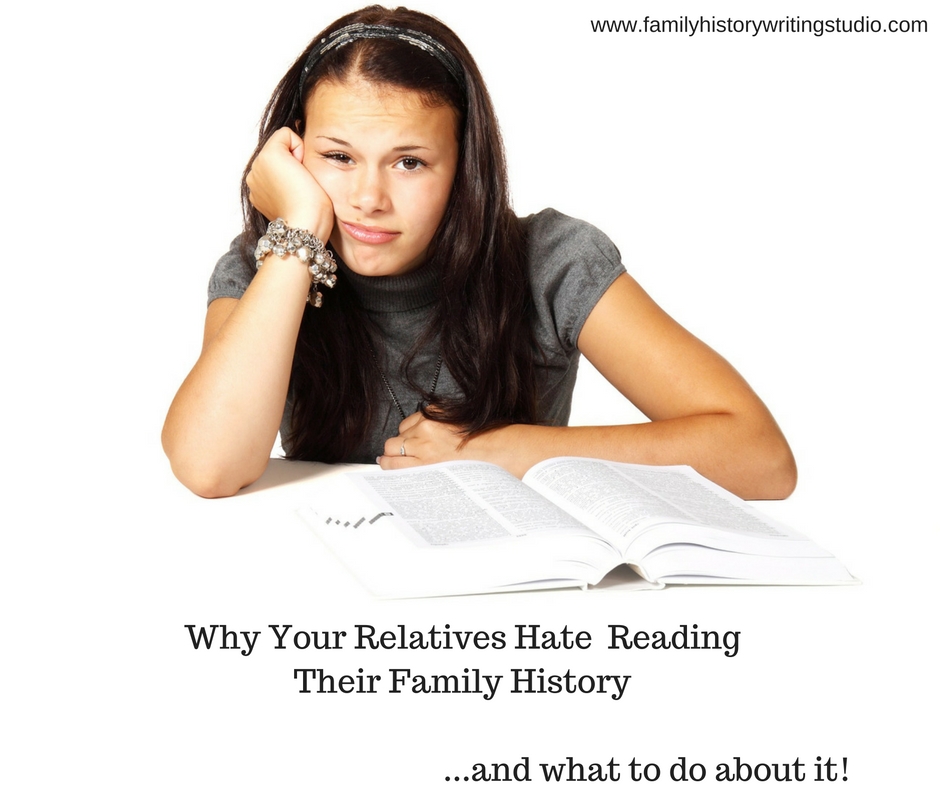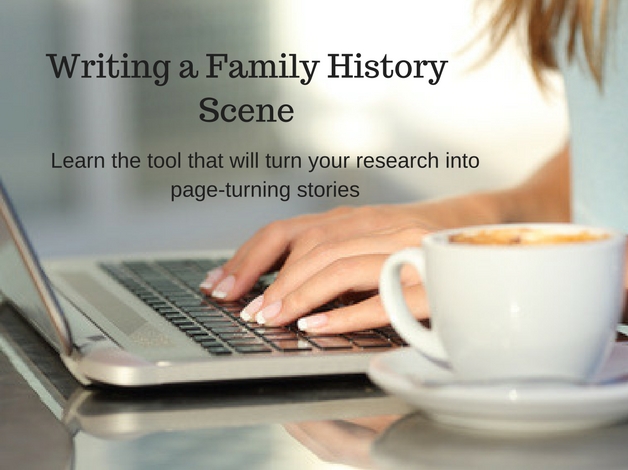Does your family object to reading their family history? Do you get the big eye roll when you offer them a story you wrote or an opportunity to preview a book your writing? Our families are completely uninterested in reading their family history. Many of us struggle with this. I know I did. Then I learned about writing scenes and about how the right balance of scene and summary can bring an ancestor to life on the page. When you learn the skill of writing scenes your stories become entertaining and compelling all the things necessary to engage your family and hold their interest.
What is a Scene?
Scenes are action, they usually include dialogue, description, conflict, thoughts, and feelings. When we read them, they are meant to play out like a movie in our brain. When we write nonfiction stories, we intermingle scenes with summary.
What is Summary?
Summary is just as it states it is an account of an event or time. The reader is given information in a brief format to move the story along. Sometimes summary will cover a span of years to speed up a story or fill in background information to add depth to a story. As family historians, we fall into the trap of writing everything, our entire story, in a summary format. This why our stories are boring.
We need to learn the skill of writing scenes and then to find the right balance of scene and summary to lay out a story.
How do we take a document like a passenger list or a marriage certificate or the birth of a child and bring it to like on the page? How do we but our reader there and allow them to experience the event as if it is playing out before their eyes – using scene.
When we combine scene with narrative summaries, we are writing creative nonfiction. That term creative nonfiction tends to scare many. They feel they are moving away from the facts and making things up. But that is entirely wrong. Creative nonfiction is taking the facts and laying them out on the page using scene and summary – using the tools of fiction writers while writing true stories.
Regardless of whether you are writing a family history narrative in third person or a memoir in first person scenes should be a part of your writing formula. Irrespective of whether you are writing a family history in a short story format or an epic novel you need to be using scene and summary to capture and hold the attention of your readers.
What is a family history scene?
How does a scene that you read in a novel differ from a family history scene you would read in a family history story? A family history scene takes an event in your ancestor’s life, getting on a ship to America, voting for the first time, giving birth, getting married, proposing to their spouse or signing the documents to own their first acre of land and then using action, dialogue, description, conflict, and emotion bring it to life on the page.
As family historians, we collect information about this event, information that we garnered from our research, our documents, information from interviewing those who were present at the event or have heard stories of the event. With those facts in hand, we take it one step further, we put the event within a social context of the place and time –we do some social history research. We set the stage by painting a setting of where the event was held. We describe it in detail giving it life.
Next, we put the characters into that setting, our ancestors. How did they look and act? Human nature, diaries, interviews and the actions of our ancestors will give us plenty of insight into the behaviours and motivations.
As I have suggested, a family history scene is born out of the records we have acquired in our research. Research we have identified and analysed and then interpreted into a scene in our story. We make it clear to the reader the facts versus our speculation.
Sounds easy right? Well for some it does come easy and for others, it takes some practice, actually, for most, it takes some time to learn the skills and then to practice those skills. But once you have the knowledge of scene writing you’ll never turn back to strictly writing a dry narrative summary.
Do you want to learn the skill of scene writing?
It’s not enough for me just to tell you what constitutes a scene and how it will transform your boring stories into  entertaining stories. The real learning comes in building scenes. I wanted to help writers acquire those practical skills of scene writing so I created an online workshop, Writing a Family History Scene. In this 6-week course, we work through each element building a robust scene one you will be excited to say you wrote.
entertaining stories. The real learning comes in building scenes. I wanted to help writers acquire those practical skills of scene writing so I created an online workshop, Writing a Family History Scene. In this 6-week course, we work through each element building a robust scene one you will be excited to say you wrote.
Here’s what some past students have said about this course.
Kim Said:
I thoroughly enjoyed completing this course in “Writing a Family History Scene” and would recommend it to all aspiring family history writers. It is inspiring when you can see yourself and your fellow students improve so much by the end of the course. Lynn’s teachings have given us the tools to carefully craft our stories for the enjoyment by our families. I have learned so much.
Denise Said:
This course opened my eyes to scene structure. My writing improved immensely once I had the right tools and guidance to build a scene properly. This is my second Family History Writing Studio course, and it will not be my last. Between Lynn’s excellent guidance and the input from the other students, it was an interactive learning experience I highly recommend to anyone who is thinking of writing a family history narrative. In order to do any job properly, you need the right tools and, in my opinion, this is the place to build your toolbox.
If you’re ready to write a non-boring family history story, then join us for Writing a Family History Scene.



I am looking forward to the course! I have invited two friends to join us and one did sign up. I expect to not only learn a great deal but also to enjoy the process. Thank you Lynn, for this opportunity.